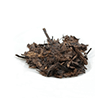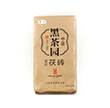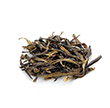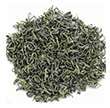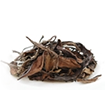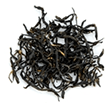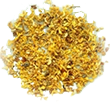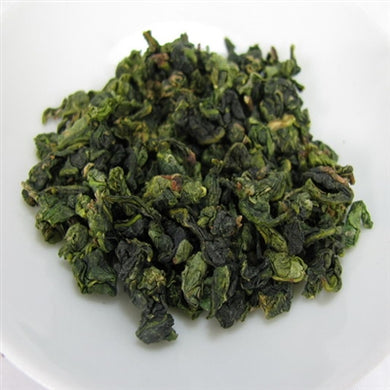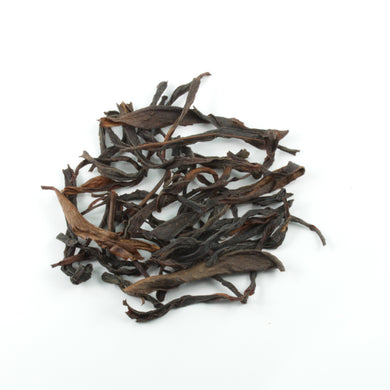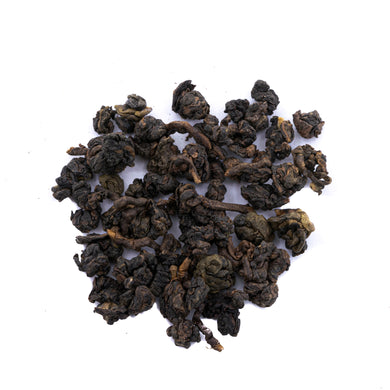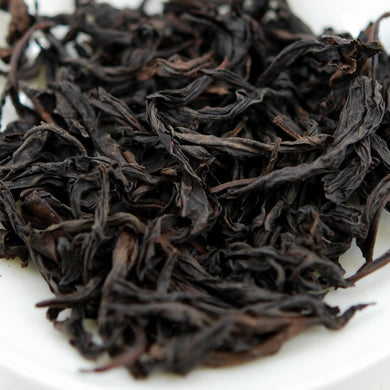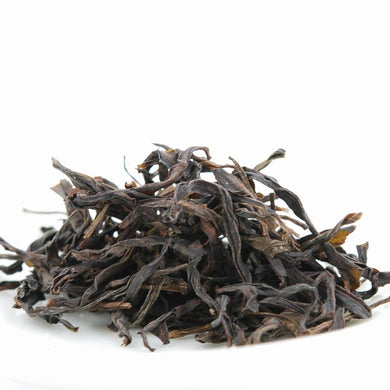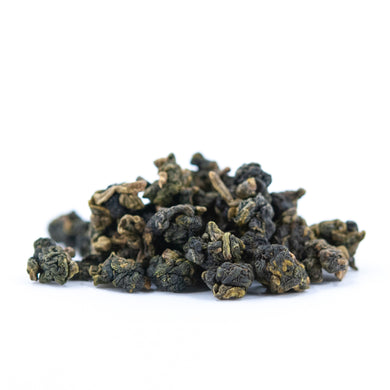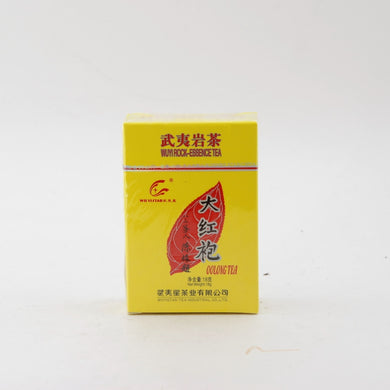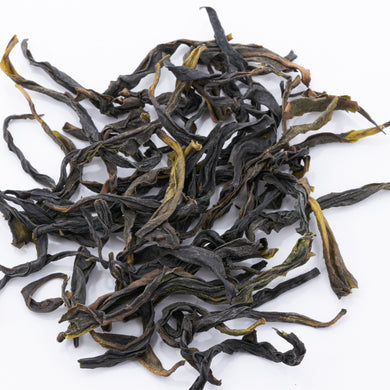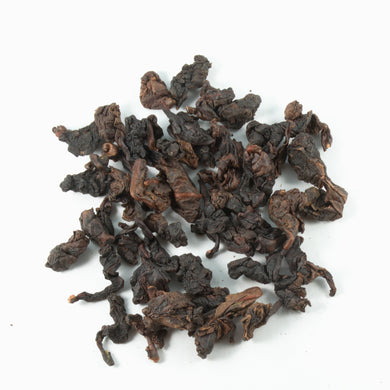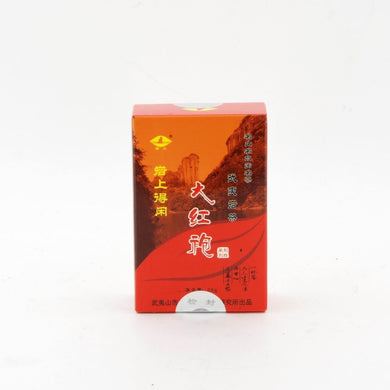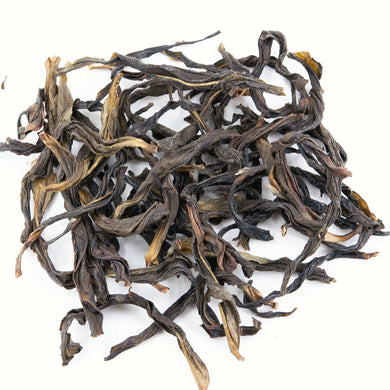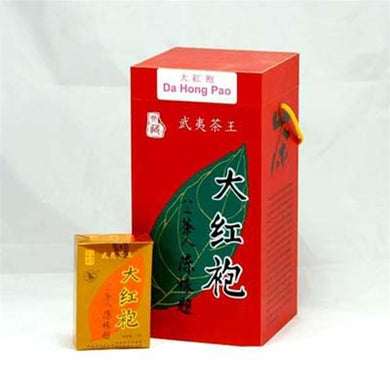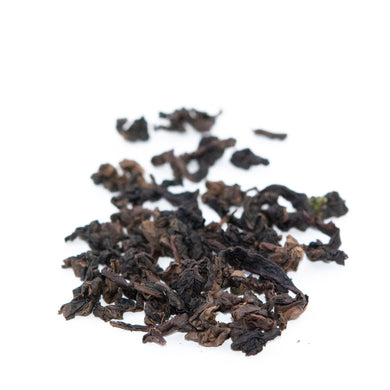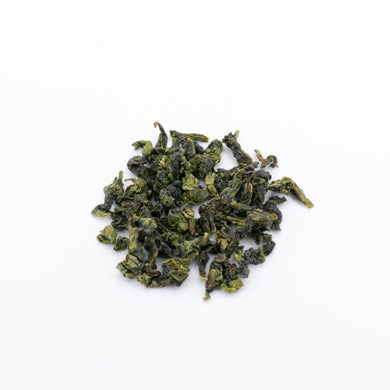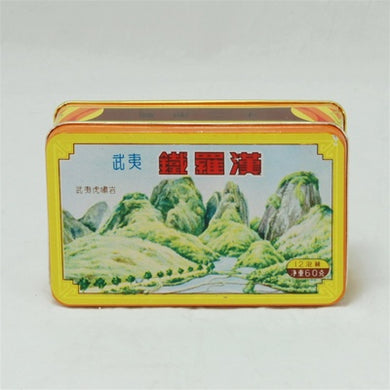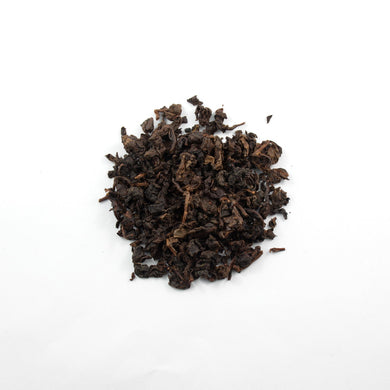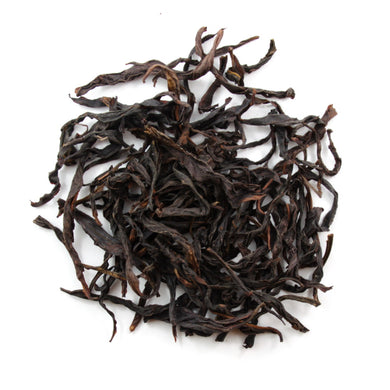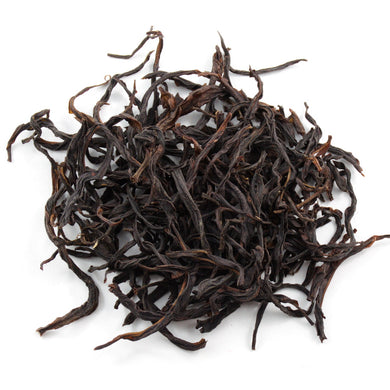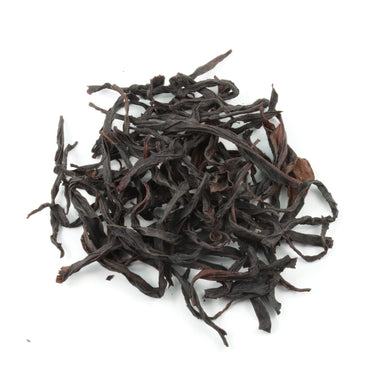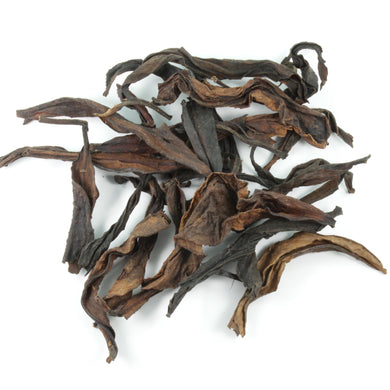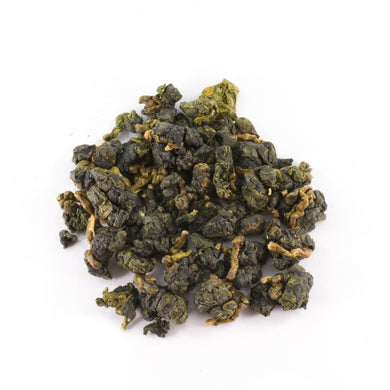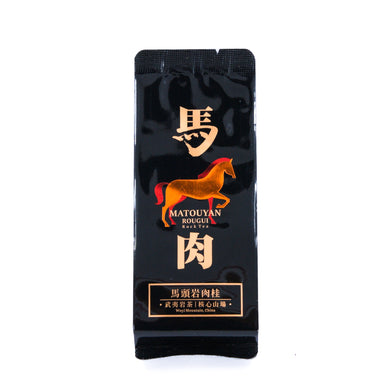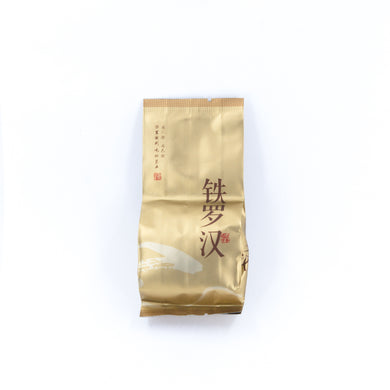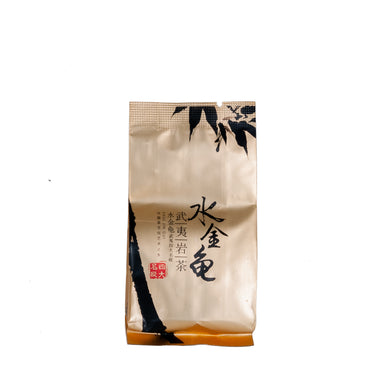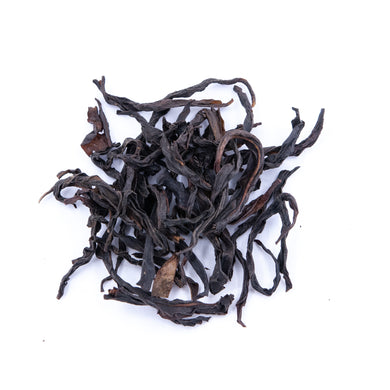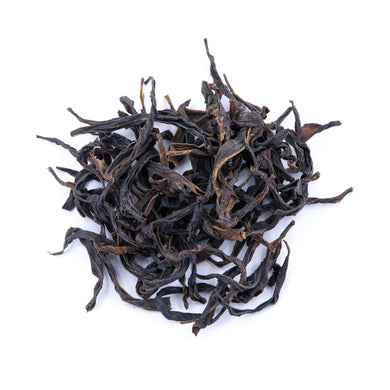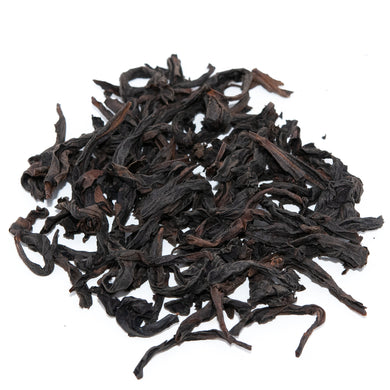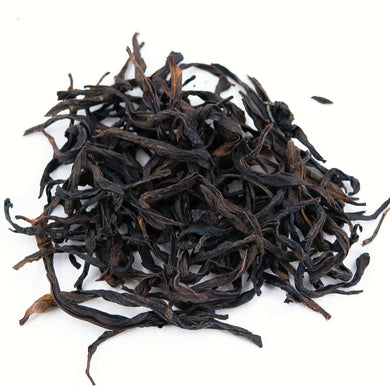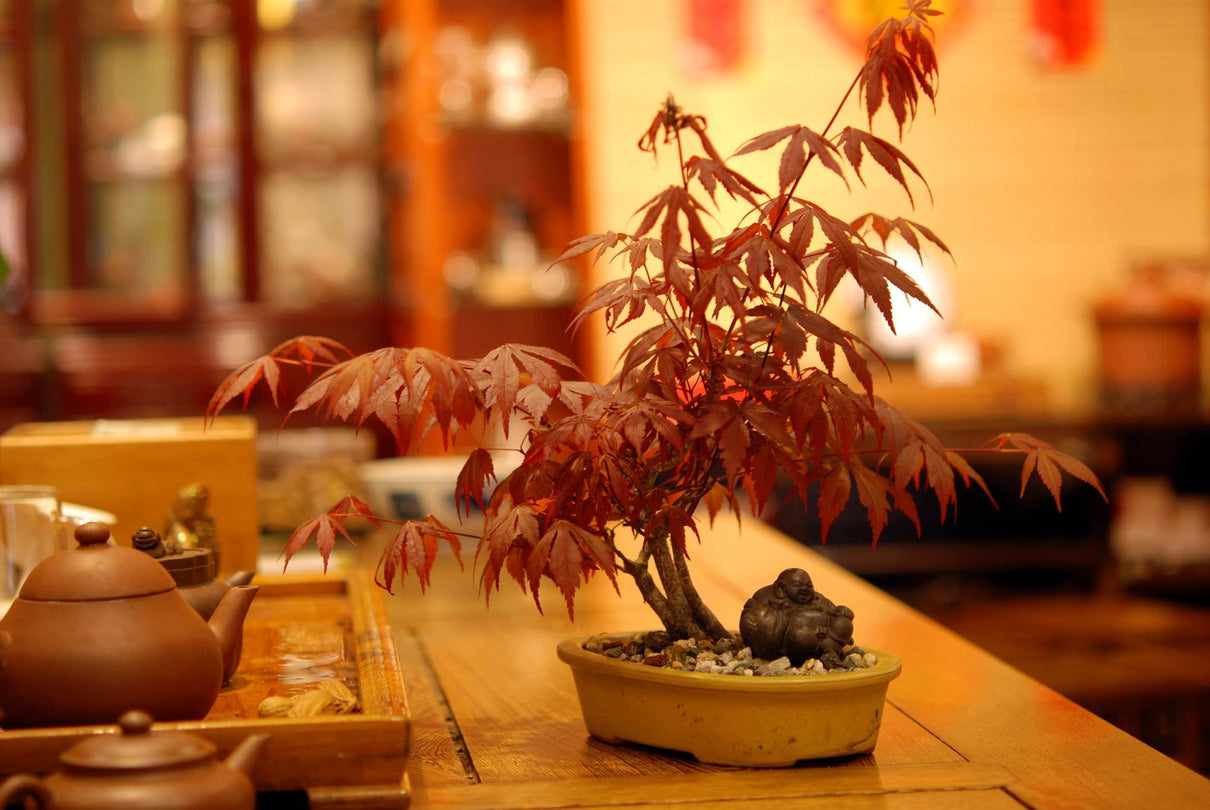1980's Aged Traditional Iron Buddha Oolong Tea (Charcoal Roasted)
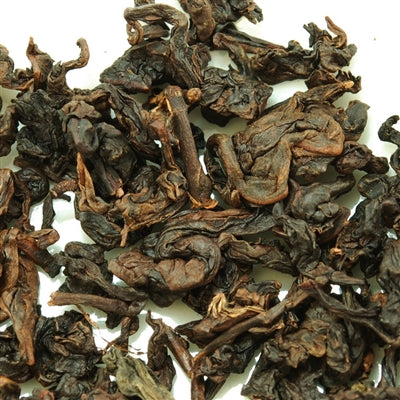
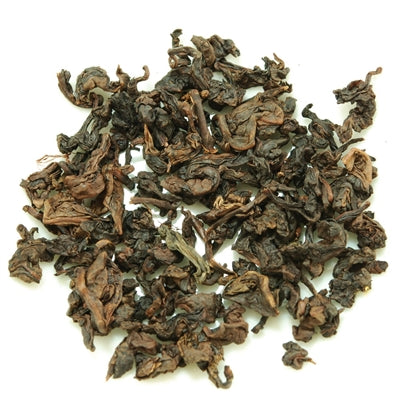
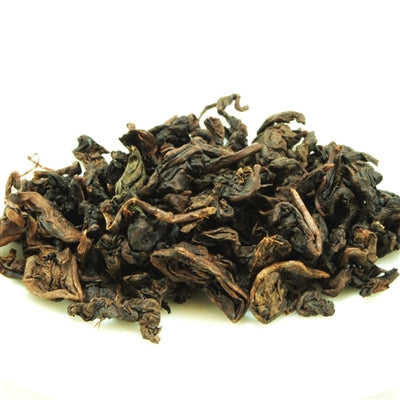
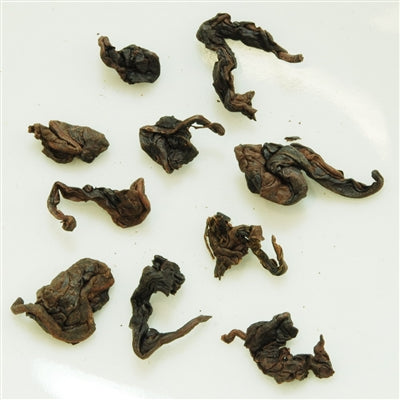

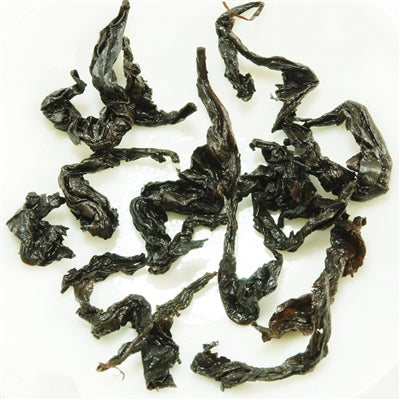
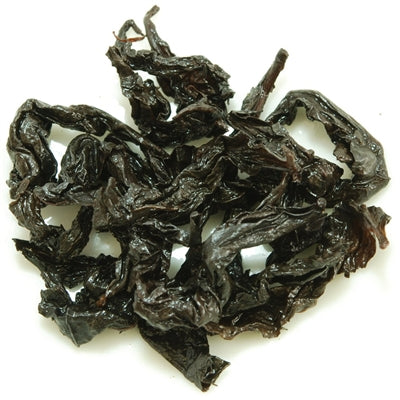
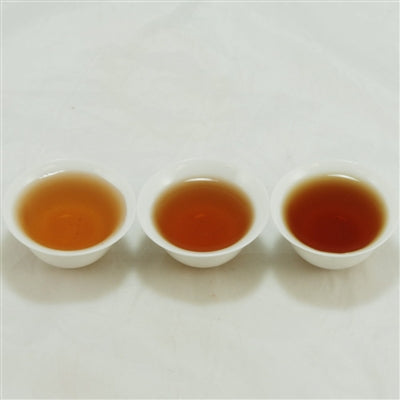
In Spring 2011, I embarked on a tea buying trip to Taiwan where I stumbled upon a remarkable 30-year-old charcoal-roasted aged Oolong Tea. The tea was carefully stored in a large, glazed clay container that was tightly sealed with a wooden cover and wax.
Upon opening the container, a delightful raisin aroma greeted my senses, indicating that I had come across an exceptional quality aged Oolong Tea. The tea leaves were rolled into a half-ball shape with a distinctive tail resembling a dragonfly. Thanks to its age and well-preserved storage, the Smokey flavor was mild, and the tea soup had a clear, reddish-brown color.
As I sipped the tea and swirled it around my mouth, my taste buds were awakened by the prune-like flavor. The tea left an intriguing cool and dry sensation at the back and underside of my tongue. Unlike most Oolongs that require three or more brews to taste sweet, this one delivered a sweet taste in the very first infusion.
The tea had a smooth and rich body, and the taste was both complex and satisfying. The "Qi," a Chinese term used to describe the energy that tea imparts to the body, was slow to manifest at first, but soon became pronounced and strong, leaving me feeling invigorated.
Tea: 1980's Aged Traditional Iron Buddha Oolong Tea (Charcoal Roasted)
Factory: Private farmer
Process Origin: Anxi, Fujian province
Aged Origin: Has been stored in Taiwan for 30 years and stored in Vancouver since 2011
Types: Traditional Iron Buddha Oolong (Charcoal Roasted)
Harvest Period: 1980's
The Quick Way - 5 Easy Steps
Step 1
Rinse a teapot, small teacups and a small pitcher with hot water.
Step 2
Put one tablespoon of tea leaves in the teapot for every two people being served. Use more for large leaf tea or for a stronger taste.
Step 3
Place the tea leaves inside the teapot and pour in enough hot water to cover the leaves. Pour out the water immediately to rinse the leaves. Use to this chart for proper water temperatures.
|
Green Tea Silver Needle White Teas and most tea made from “tips” |
75C – 80C |
|
Taiwan Oolong Tips Red/Black Teas |
90C – 95C |
|
Black Teas Pu-Erh (Bow-Lay) Te Guan Yin (Iron Buddha) Da Hong Pao (Cliff Tea) Lapsang Souchong Phoenix Oolong Aged White Teas |
95C – boiling |
IMPORTANT NOTES:
- Too much or too little heat for the tea you are making will break down the leaves too quickly or too slowly and the flavour will be inconsistent. Temperatures can be approximate.
- *Boiling means when the water has just reached a slow boil with big bubbles. The Chinese call this “Fish-Eye Water”. For green tea, watch for small streams of tiny bubbles starting to rise from the bottom of the kettle. This is called “Crab-Eye Water”.
- For Oolong teas, the correct temperature is somewhere between these two. If you do not have a thermometer, let the water stand for 2 minutes or so after reaching a first boil to get 90 – 95C C / 194 – 203 F.
Step 4
Empty the teacups and pitcher. Pour enough hot water into the teapot again to cover the leaves. Wait 8 - 10 seconds and pour the tea into the pitcher and serve, a little longer for a stronger taste. For additional brews, repeat Step 4, deducting two seconds for the second brew and adding two seconds for each additional brew.
Step 5
As the aromatic compounds in the tea leaves dissolve in the water, you will notice the subtle flavours of the tea begin to change with each brew. You will be amazed at the difference! To make tea taste even better, try making tea using Gong Fu Cha method, the traditional Chinese art of tea-making.
The Traditional Way Using The Gong Fu Cha Method
You will need:
- Teapot - preferably a small Chinese Yixing teapot. These have the best heat handling properties for tea-making, as well as for developing the flavour. If you only have a large teapot, use the quantities of water as if a small teapot and tea shown on the charts.
- Small teacups (similar in size to Japanese sake cups) or tiny bowls
- Kettle
- Pitcher - small glass or porcelain
- Fine Strainer - to keep your tea clear and free of sediment
- Tea Tray - A cookie sheet or large flat dish lined with a towel can make a good tray to prepare your tea on.
Step 1 - Warm The Teapot and Pitcher, Sterilize The Teacups and Strainer
The first step is to use the right size of teapot for the number of people you are serving. Most teas taste best when made using a Yixing unglazed clay teapot. Use this chart for the correct size of teapot for the number of people you are serving (use this amount of water if you are using a larger teapot). Pour some hot water into the teapot, pitcher, teacups and over the strainer to rinse, warm and sterilize them.
|
Size of Teapot |
Volume (ml / fl oz) |
Number of People Served |
|
#1 size |
70 / 2.4 |
1 - 2 |
|
#2 |
100 / 3.4 |
2 - 4 |
|
#3 |
175 / 6.0 |
3 - 5 |
|
# 4 |
225 / 7.6 |
4- 6 |
Referring to this chart, determine the correct water temperature for the type of tea you are making. Too much or too little heat will break down the leaves too quickly or too slowly and the flavour will be inconsistent. Temperatures can be approximate.
|
Green Tea Silver Needle White Teas and most tea made from “tips” |
75C – 80C
|
|
Taiwan Oolong Tips Red/Black Teas |
90C – 95C |
|
Black Teas Pu-Erh (Bow-Lay) Te Guan Yin ( Iron Buddha) Da Hong Pao (Cliff Tea) Lapsang Souchong Phoenix Oolong Aged White Teas
|
95C – boiling |
* Boiling means when the water has just reached a slow boil with big bubbles . The Chinese call this “Fish-Eye Water”. For green tea, watch for small streams of tiny bubbles starting to rise from the bottom of the kettle. This is called “Crab-Eye Water”.
For Oolong teas, the correct temperature is somewhere between these two. If you do not have a thermometer, let the water stand for 2 minutes or so after reaching a first boil to get 90 – 97C C / 194 – 206 F.
Step 2 – Rinse The Tea Laves
Empty the teapot and pitcher of the warming water. Place the measured amount of tea into the teapot using this chart and fill with the proper temperature water from the chart above. When pouring water in, allow the water to overflow the top of the teapot until the bubbles disappear and the water runs clear.
|
Size |
Size of Leaves |
|||
|
Rolled Leaves |
Less than 1 cm / 3/8 inches |
1 – 2 cm |
2 - 4 cm |
|
|
#1 size |
0.5 - 1 |
0.5 - 1 |
1 – 1.5 |
1.5– 2 |
|
#2 |
1.5 - 2 |
1.5 - 2 |
2 – 2.5 |
2.5 – 3 |
|
#3 |
3 – 3.5 |
3 – 3.5 |
3.5 – 4 |
4 – 4.5 |
|
# 4 |
4 – 4.5 |
4 – 4.5 |
4.5 – 5 |
5 – 5.5 |
This chart shows the amount of tea to use (in number of tablespoons) based on the size of the tea leaves you are using and the size of teapot. Adjust for personal taste.
Replace the lid and immediately pour off all the water (or a bit longer if using compressed tea) and shake out the last drops. Then tilt the lid slightly open on the teapot. This allows the heat in the teapot to escape and not “cook” the leaves so they can retain their aroma
Step 3 –The First Brew
Fill the teapot until the water flows over the top. Place the lid on the teapot and count the proper number of seconds using this chart. Adjust times to taste.
|
|
Rolled Leaves |
Less than 1 cm / 3/8 inches |
1 – 2 cm |
2 - 4 cm |
|
Rinse the leaves |
4 - 8 seconds |
pour off the tea as quickly as possible |
1- 3 seconds |
2 - 4 seconds |
|
First Brew |
10– 15 seconds |
1 – 2 seconds |
9– 12 seconds |
12 – 15 seconds |
|
Second Brew |
8– 13 seconds |
2– 4 seconds |
8– 10 seconds |
10– 13 seconds |
|
Third Brew |
6– 10 seconds |
4– 6 seconds |
6–8 seconds |
8– 10 seconds |
|
Fourth Brew |
4– 10 seconds |
4– 6 seconds |
6– 8 seconds |
8– 10 seconds |
|
Fifth Brew |
6– 12 seconds |
8– 8 seconds |
8– 10 seconds |
10– 12 seconds |
If you have a tea tray, slowly pour a little hot water over the teapot for a few seconds while counting. At the end of the count, pour the tea into the pitcher and tilt the lid open on the teapot. Empty the teacups of the warming water and serve the tea.
Step 4 – Additional Brews
For the second brew, repeat Step 3 until there is no more flavour from the leaves. High quality tea will make many good tasting brews. The taste of low quality tea will start to fade after only a few brews. Believe it or not, high quality tea is usually less expensive to use in the long run than low quality tea, it tastes better and lasts longer!
If the leaves still have some flavour remaining when you finish, you can keep them in the teapot with the lid closed for up to 12 hours. When you're ready to make more tea, just pick up the timing for the next brew where you left off, less a few seconds.
Congratulations!
Congratulations, you are now ready to move on to a more advanced level of tea-making. For full instructions about Gong Fu Cha, see Gong Fu Cha - The Complete Guide To Making Chinese Tea by Daniel Lui)
Description of Love for the Iron Buddha
Dry leaves smell of dark dried fruits, raisins, cherries, prunes, etc. When steeped the dried fruits are amplified and a fragrant almost sweet smokiness comes through. Lot's of earthy notes, damp forest floor, wet wood and charcoal. The smoke is mature and mellow. To compare my taste, the Iron Buddha has a dried fruit/smoke as opposed to the Wu Yi Rou Gui's more mineral/smoke profile. The liquor is at the same time both heavy and also airy or fluffy, something I might describe like the heaviness of blue/white smoke. It's hard to pinpoint and must be experienced. Stimulating mouthfeel, slight tartness on the finish, of the lingering dried fruits. I like to steep it hot and strong for a richer liquor and more complex mouthfeel. It is well-aged and carries minimal astringency. For reference I've been getting two strong western style brews plus a courtesy (less strong) third brew simply because this tea commands to be extracted to the fullest. All complexity aside I highly recommend this tea. Buy it and simply enjoy it. I immediately bought more along with a contingency reserve for future consumption. There is not enough of it in the world!
Excellent aged hot roasted oolong
Very tasty tea! This is the oldest hot roast (charcoal aroma) oolong which I have come across and the best which I have experienced.
Personally, My First Vintage Tea
My first ever vintage tea purchase, and first tea purchase from The Chinese Tea Shop. Incredible. I did my best to follow the tea brewing instructions on this site, and the results were splendid. From the first brew, this a rich and memorable flavour. Subsequent brewings were unique and important - I have not felt more centred from drinking tea. Getting the hang of the brewing. My family and I cannot get enough of this beautiful tea, and the new ritual of this tea making experience.
A+ Top shelf
I found this Oolong to be very invigorating and smooth with a complex flavor that is great for multiple infusion. The Qi is deep and satisfying, leaving my body feeling energized and spirit calmed and centered. I definitely need to get more!



